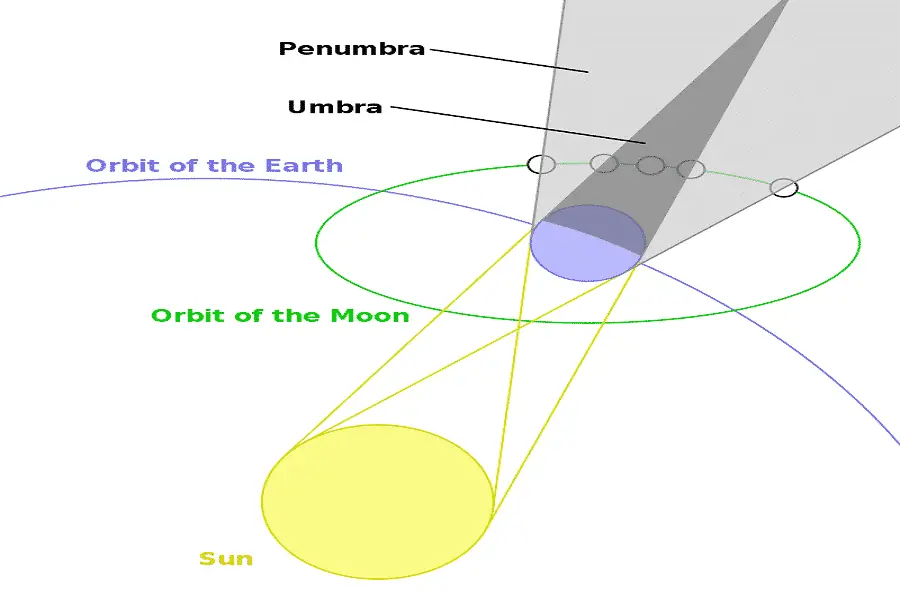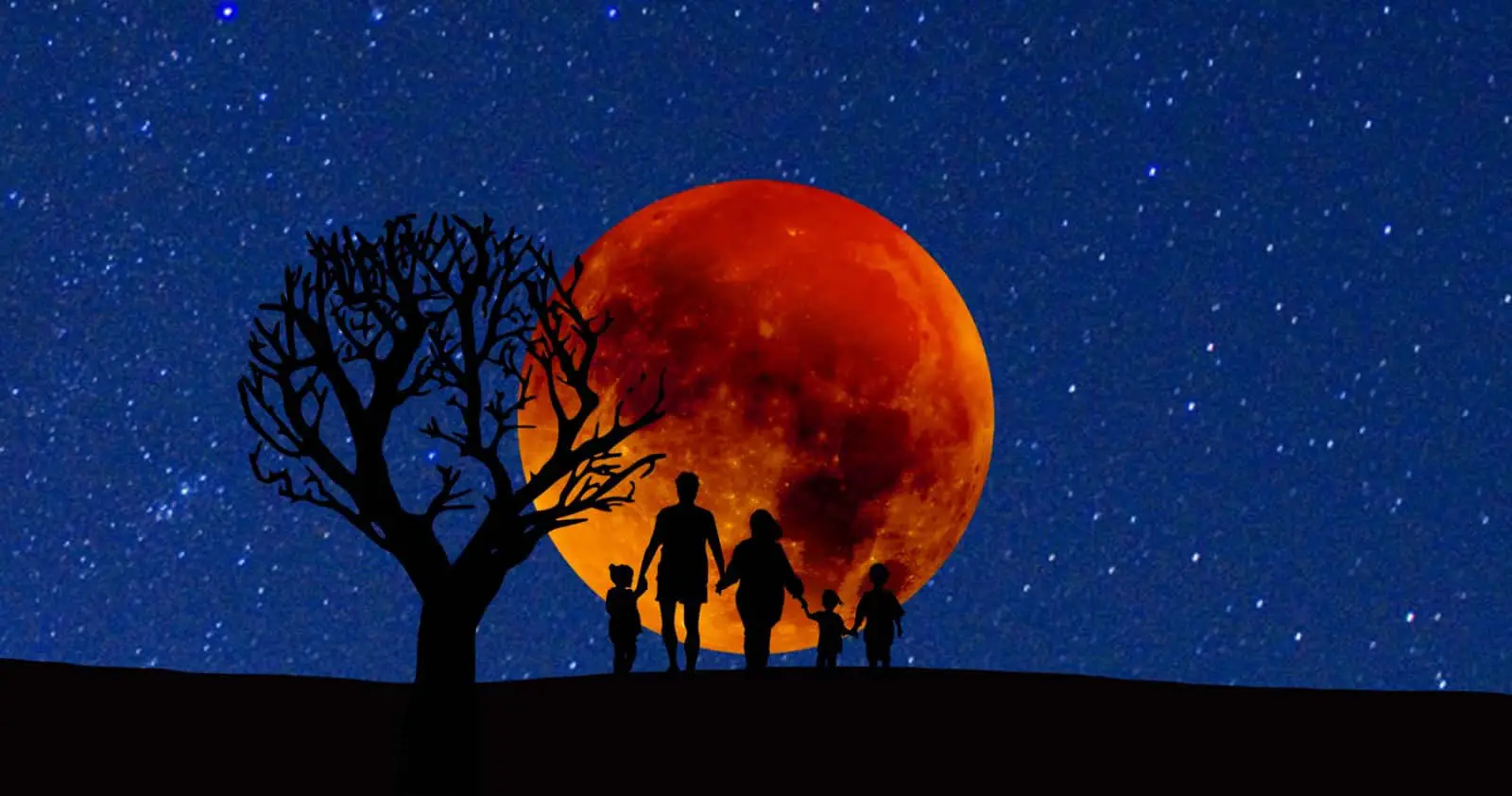The next and final lunar eclipse of 2020 will occur on Monday, November 30 which is coinciding with the full beaver moon. Okay, beaver moon for the people living in the northern hemisphere and flower moon for the people living in the southern hemisphere.
Apart from that, this last lunar eclipse of 2020 will be the Penumbral Lunar Eclipse. In fact, all the eclipses of the moon that had happened in 2020 were the penumbral lunar eclipse. Moving ahead, the next lunar eclipse will be visible from some places, and from some, it won’t. WHY?
Well, don’t worry, we will talk about this in the later section. But, before going ahead, let me give a short and crisp review of the definition of the lunar eclipse and, of course, its type too. I mean, I just want you to know that why this November month lunar eclipse is a penumbral lunar eclipse, why not the partial or total lunar eclipse!
Highly recommended, Full Moon Calendar 2021 (Dates, Names & Moon Sign – Southern Hemisphere)
What is a lunar eclipse?
According to the lunar eclipse definition, a lunar eclipse will occur when these two principal criteria are fulfilled.
- First, only on a full moon day, a lunar eclipse can occur. Thankfully, November 30 is a day of full beaver moon. So, we are safe here.
- Second, a lunar eclipse will occur when the earth comes between the moon and the sun. In other words, an eclipse of the moon occurs when the earth’s shadow partially or completely blocks the sunlight from falling on the surface of the moon.
In fact, the second criteria i.e the earth’s shadow also play a decisive role in the fact that whether the lunar eclipse is total or the penumbral one.
Check out, Full Moon Calendar 2021 (Dates, Names & Moon Sign – Northern Hemisphere)
Game of Shadows

For starters, a shadow can be divided into three parts i.e Umbra, Penumbra, and Autumbra. But because of the demand for the topic, right now we are only interested in the first two. (Refer to the above image for proper understanding).
An umbra is the innermost part of the shadow, where the light source(sunlight) is completely blocked by the opaque body (earth). In layman, you can say that the umbra is nothing but the darkest part of the shadow.
Conversely, a penumbra is the outer part of the shadow, where the light source is not blocked but only obscured by the opaque body. In layman, you can say that the penumbra is nothing but the lightest part of the shadow.
Check out, 8 Lunar Phases – From New Moon to Full Moon to New Moon
Types of Lunar Eclipse

Well, as per the game of shadows, there are generally three types of the lunar eclipse. These are penumbral lunar eclipse, total lunar eclipse, and partial lunar eclipse. (Refer to the above image for proper understanding).
- A penumbral lunar eclipse occurs when the moon passes through the earth’s penumbra.
- Similarly, a total lunar eclipse occurs when the moon completely passes through the earth’s umbra.
- A partial lunar eclipse occurs when the moon partially passes through the earth’s umbra.
I hope now you know why November 30 lunar eclipse is the penumbral lunar eclipse. WHY?? Because during the last lunar eclipse of 2020, the moon will pass through the earth’s penumbra i.e the earth’s outer shadow.
Must read, Hence, That’s How Was The Moon Formed…!!!
When & Where to see the fourth & final penumbral lunar eclipse?
 Just because of the fact that the earth is round when half of the planet is living in the darkness, at the same time, the other half is enjoying the daylight.
Just because of the fact that the earth is round when half of the planet is living in the darkness, at the same time, the other half is enjoying the daylight.
Therefore, as a result of the earth’s curvature, of course, the earth’s tilt, this eclipse of the moon will be visible only from some specific countries.
Must read, When is the Next Total Solar Eclipse of 2020?
Visibility of November’s Lunar eclipse
Well, technically speaking, this penumbral lunar eclipse will start from November 29 to November 30. The visibility of the November month’s lunar eclipse will solely depend on the fact that where on the earth you reside. (Refer to the above image for proper understanding).
The November 30 penumbral lunar eclipse will be visible from much of Asia, Europe, Australia, North America, South America, the Atlantic, the Pacific, and the Arctic.
As far as visibility is concerned, residents of the above-mentioned countries can see about 82 to 83 % of the beaver moon going into the darkness.
Check out, Why Can’t We See The Dark Side of The Moon?
Timing of the Lunar Eclipse
The moon will enter the earth’s penumbra at 11:30 P.M. PST on November 29 (2:30 A.M. EST on November 30). The November month’s lunar eclipse will be at its zenith at 1:42 A.M. PST on November 30 (4:43 A.M. EST on November 30).
At last, the moon will leave the earth’s penumbra at 3:56 A.M. PST on November 30 (6:56 A.M. EST on November 30). In total, the duration of the eclipse of the moon will be around 4 hours, 26 minutes.
Well, as far as my country i.e India is Concerned, this eclipse won’t be visible to us. WHY? Because at the time of the eclipse, for us, the moon will be below the horizon.
In India, the penumbral lunar eclipse will start around 1 P.M. IST. Therefore, as a result, it is not possible for us to see the Penumbral lunar eclipse from India.
See also, Indeed, the moon is moving away from earth, BUT WHY?
Safety Issue

Is it safe to look at the lunar eclipse without special glasses? Well, in my view, absolutely yes. It is perfectly safe to look directly at the lunar eclipse 2020.
I mean, there is no need for any protective eyewear or special eye covers to protect your eyes. WHY? Because the intensity of light during any type of lunar eclipse is very much less as compared to the light emitted during the solar eclipse.
However, if you want to enhance the beauty of your majestic view, you can definitely use a binocular. At last, I wish you good luck with this epic moon gazing. And, do let me know about your astonishing experience in the comment section.
Must read, Difference Between Solar and Lunar Eclipse (Tabular Form)
Frequently Asked Questions
1. When was the last lunar eclipse?
Ans. The last penumbral lunar eclipse occurred on Sunday, July 5, 2020, which was also the eve of the full buck moon.
2. What happens in a lunar eclipse?
Ans. During a lunar eclipse, the earth partially, or sometimes completely blocks the sunlight from falling on the lunar surface.
3. How often do lunar eclipses occur?
Ans. The frequency of the lunar eclipse varies. I mean, sometimes there are just two lunar eclipses in a calendar year. On the contrary, sometimes are there four. Like this year, we have in total 4 lunar eclipses.
- Wolf Moon – Friday, January 10, 2020
- Strawberry Moon – Friday, June 5, 2020
- Buck Moon – Sunday, July 5, 2020
- Beaver Moon – Monday, November 30, 2020
Not to mention, all of them were the penumbral lunar eclipses. As a matter of fact, the total lunar eclipses are significantly less common.
That’s it for this post. If you like this article, share it if you like it, like it if you share it. You can also find us on Mix, Twitter, Pinterest, and Facebook.
You might also like:
- The Ugliest Secret of Blue Moon is Out: It’s a HOAX
- August’s Sturgeon Moon – Sturgeon Fishing Season
- September Full Moon – Corn Moon or Harvest Moon?
- First Full Moon in October 2020: Harvest Moon or Hunter’s Moon?
- The ultimate secret facts about Autumnal Equinox 2020 you never knew
